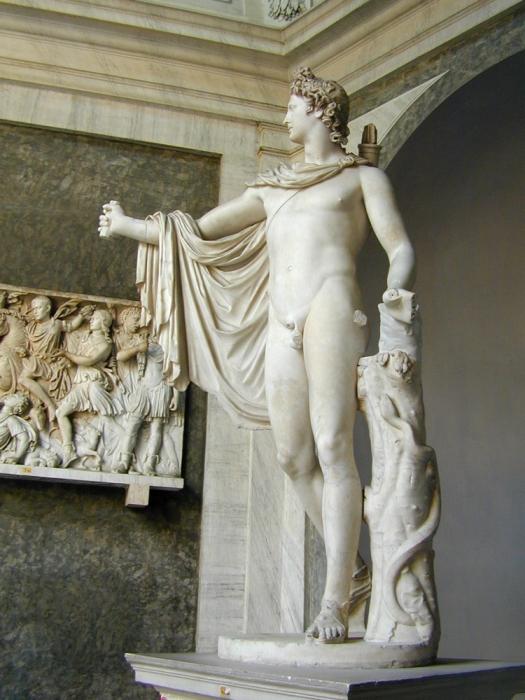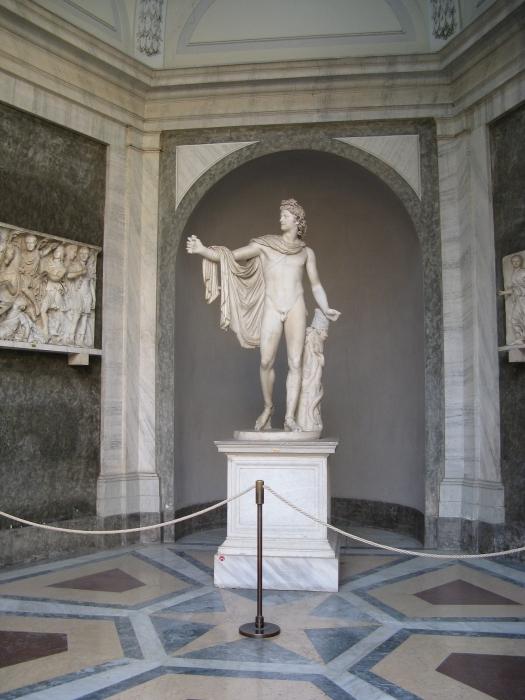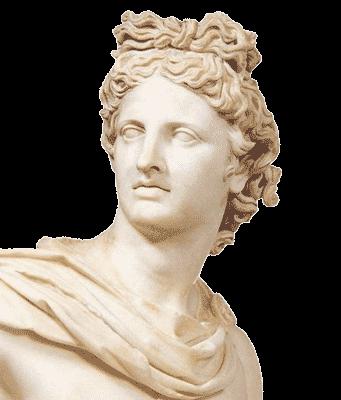Unfortunately, insignificantly few originals of ancient Greek sculpture have survived to our days . Even Apollo Belvedere, considered by many art historians to be the pinnacle of ancient culture, has survived only in a Roman marble copy. The thing is that at the dawn of Christianity, during the era of barbarian invasions, as well as during the early Middle Ages, almost all the bronze statues of ancient Greek masters were ruthlessly re-melted. No one in those dark times thought to care about the cultural heritage of mankind.

Marble images of cult ancient gods and mythological heroes were also cast down from their pedestals, and the noble stone from which they were made was often used to burn lime. During the reign of Alexander the Great , Leochar was his court sculptor. Apollo Belvedere is considered by art historians to be an exact copy of the bronze original of this master. The heyday of Leochar, a representative of the academic direction of the late classical Greek school, fell on 350-320 BC. e. The statue "Apollo Belvedere" belongs to approximately the same period, which gave researchers the opportunity to put forward a hypothesis about the authorship of Leochar. Now, after twenty-five centuries, it is hardly possible to establish the truth for certain.
The statue of Apollo Belvedere was discovered during the Renaissance (in the fifteenth century) in the possessions of Cardinal Giuliano della Rover in Anzio, who, ascending the catholic throne and taking the papal rank, ordered this great creation to be established in the place of honor of the Ottogon courtyard in the Vatican Belvedere Palace. Hence the name of the sculpture. This place is also famous for the fact that at that time there were many of the best pearls of the papal collection of great antique works of art. Apollo Belvedere coexisted with Laocoon, the torso of Hercules, Abandoned Ariadne and other equally famous creations of the brilliant masters of the past.

The evolution of attitude towards Leochar sculpture (presumably) in the circles of art historians, scientists and historians is also curious. For a long time Apollo Belvedere was estimated as an invaluable masterpiece, peak, apotheosis and culmination of ancient art. He was unanimously recognized as aesthetically perfect. And, as often happens, extremely pathos and elevated praises over time gave way to a diametrically opposite reaction. The further the study of the creations of various ancient masters advanced and the more cultural monuments of ancient civilizations appeared, the more restrained the assessments of Apollo Belvedere.

Various critics and art scholars suddenly began to find pompous and mannered features in it. And some even noticed a lot of excessive pretentiousness, pathos and geometric flaws. Meanwhile, this work can be safely called outstanding in terms of plastic merit, grace of lines and the flight of the author’s thought. The figure and the gait of Apollo combine strength with grace, indestructible energy with air lightness. Walking weightlessly along the firmament of the earth, it is as if in a state of flight. Moreover, all the movements of this master of muses, brilliantly depicted by the author in a static frozen figure, are not concentrated in one single direction, but as if diverging from the sun's rays in different directions.
To achieve a similar effect, imprinted in cold marble or bronze, the sculptor had to possess not only sophisticated craftsmanship, but also a spark of genuine genius. However, it should be recognized that in Apollo Belvedere it’s too obvious to count precisely on such an impression from the contemplator. Sculpture extremely insistently demands to admire its beauty and grace of features. And the best examples of classical antique art do not declare their merits publicly. They are beautiful without showing off. Therefore, Apollo Belvedere hides so many secrets of its origin and raises more questions than gives answers.
Without a doubt, only one thing: this sculpture is perhaps the most significant example of ancient art. And certainly one of the most mysterious.